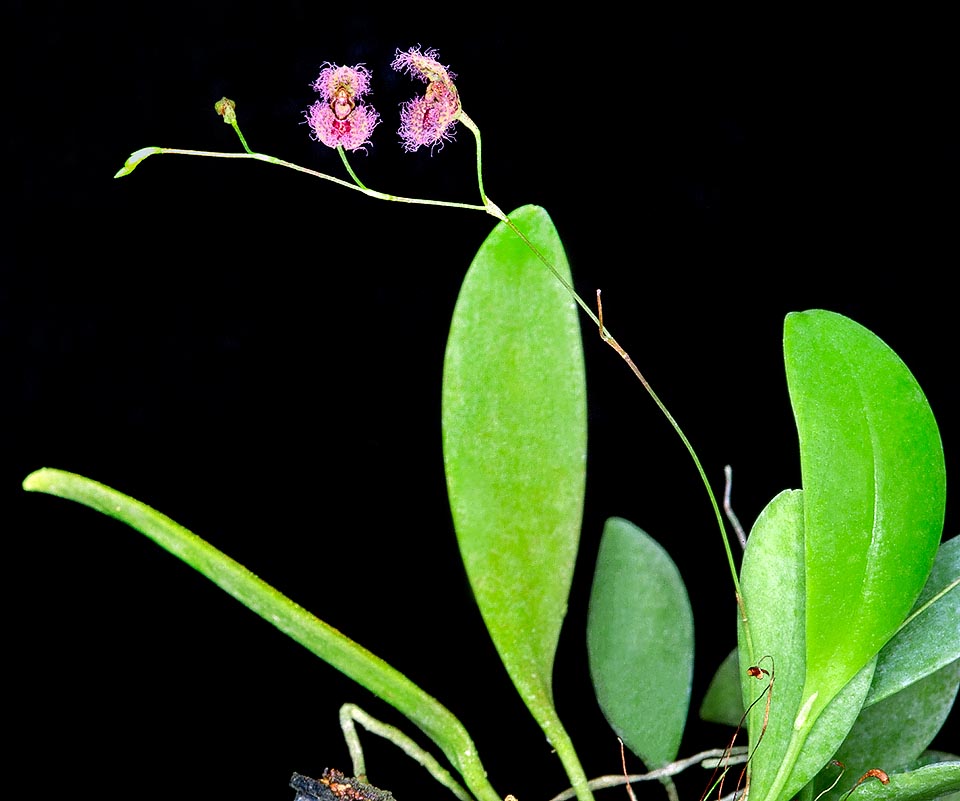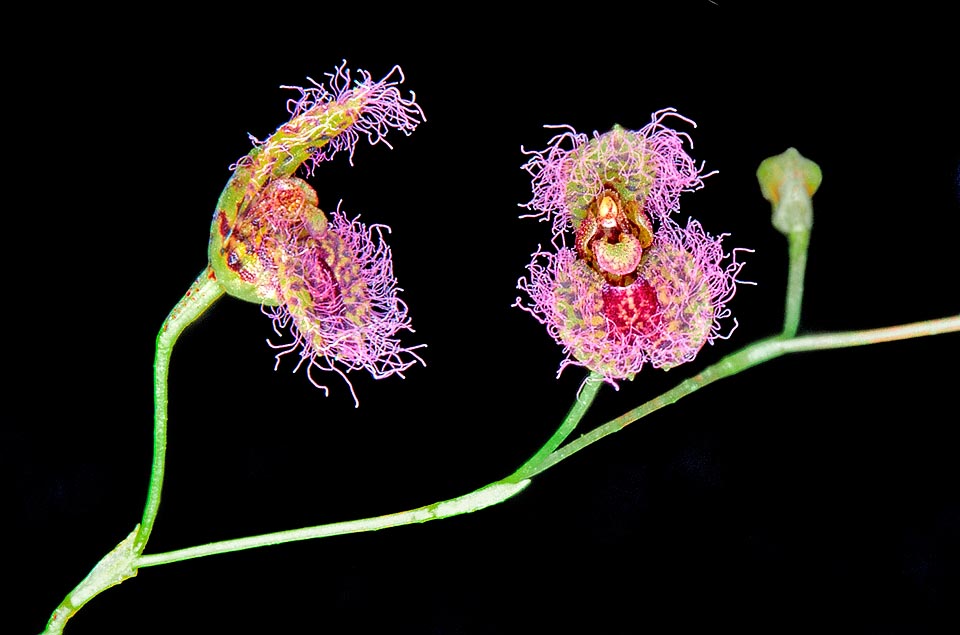Family : Orchidaceae

Text © Pietro Puccio

English translation by Mario Beltramini
The species is native to Costa Rica, El Salvador, Guatemala, Honduras and Mexico (Chiapas, Colima, Durango, Guerrero, Jalisco, México, Michoacán, Morelos, Nayarit, Oaxaca, Puebla, Sinaloa and Veracruz) where it lives on the trees of the humid mountain forests between 800 and 2600 m of altitude.
The name of the genus is the Greek substantive “στηλίς” (stelis), in the ancient times utilized to indicate the mistletoe (Viscum album L., 1753) that analogously grows on the trees; the specific name is the Latin adjective “villosus, a, um” = villous, hairy, with reference to the flower.
The Stelis villosa (Knowles & Westc.) Pridgeon & M.W.Chase (2001) is a cespitose epiphyte species with creeping rhizome and stems provided of only one leaf at the apex, thin, cylindric at the base, with triangular section towards the apex, 2,5-6 cm long, partially covered by tubular sheaths. Oblong-elliptic leaves with emarginate obtuse apex and cuneate base, coriaceous, thick, rigid, 3-6 cm long and 0,8-2,2 cm broad.

Stelis villosa is a Central American mini orchid. Cespitose epiphyte with creeping rhizome. Stems provided of one only leaf, 3-6 cm long, at the apex © Giuseppe Mazza
Terminal inflorescences, on a 2-6 cm long filiform peduncle, erect, solitary or fasciculate, up to 4-5 per stem, racemose, supple, 5-9 cm long, bearing up to 11 shaggy flowers of greenish yellow colour with thick and irregular purple maculae, of about 0,8 cm of diameter, opening in succession for a long period.
Oblong-elliptic dorsal sepal with obtuse apex and shaggy margins, concave, keeled, 6-8 mm long and about 3 mm broad, elliptic lateral sepals with acute apex, concave and shaggy externally, about 5 mm long and 2,5 mm broad, united at the base per half or more of their length. Spatulate petals with obtuse apex, about 3 mm long and 1,5 mm broad, unguiculate labellum (with the narrowed base similar to a stem), oblong with obtuse apex, 3-4 mm long and 1-,5 mm broad, and winged linguiform column with denticulate apex, about 3 mm long.
It reproduces by seed, in vitro, but usually by division with each section provided of at least 4-5 stems.

The inforescences bear even unusual shaggy flowers opening in succession for a long time. They are of about 8 mm of diameter © Giuseppe Mazza
Mini orchid with particular and long flowering that forms dense tufts, requires a semi-shady position, cool to intermediate temperatures, high humidity, 65-80 %, and constant ventilation. It can be mounted on trunks, pieces of bark or rafts covered by sphagnum to maintain the humidity at the roots, or cultivated in pot with a draining compost that can be formed by medium sliced pieces of bark, charcoal and sphagnum. Frequent watering, even daily with high temperatures, only slightly more spaced in winter, without ever allowing the substratum to dry up completely, ad it does not have a precise resting time.
The species is inscribed in the appendix II of the CITES (species whose trade is internationally ruled).
Synonyms: Pleurothallis villosa Knowles & Westc. (1838); Pleurothallis schiedei Rchb.f. (1850); Humboltia schiedei (Rchb.f.) Kuntze (1891); Humboltia villosa (Knowles & Westc.) Kuntze (1891); Pleurothallis hirsuta Ames (1908); Specklinia villosa (Knowles & Westc.) Luer (2004); Effusiella villosa (Knowles & Westc.) Luer (2007).
